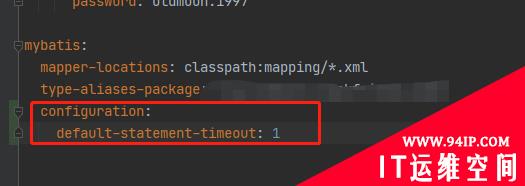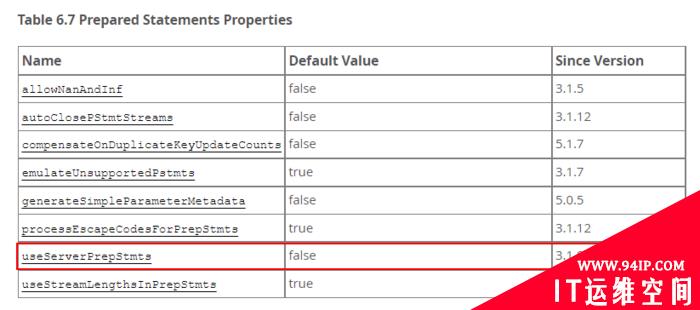
图-nagios
nagios分布式配置具体过程如下:
一、NSCA插件安装与配置
http://nchc.dl.sourceforge.net/sourceforge/nagios/nsca-2.7.2.tar.gz
编译安装nsca:
查看源代码
打印帮助0./configure && make all
nagios主服务端:
1.拷贝nsca相关文件至nagios目录
查看源代码
打印帮助0cp sample-config/nsca.cfg /usr/local/nagios/etc/
1cp src/nsca /usr/local/nagios/bin/
2chown nagios.nagios /usr/local/nagios/etc/nsca.cfg
3chown nagios.nagios /usr/local/nagios/bin/nsca
2.配置nsca.cfg文件中password
查看源代码
打印帮助0vi /usr/local/nagios/etc/nsca.cfg #去掉password前面的#,设置密码
1password=xxx
3.开启nsca程序
查看源代码
打印帮助0/usr/local/nagios/bin/nsca -c /usr/local/nagios/etc/nsca.cfg
4.开启防火墙5667端口
查看源代码
打印帮助0iptables -I RH-Firewall-1-INPUT -m state –state NEW -m tcp -p tcp –dport 5667 -j ACCEPT
nagios分布式服务端:
1.拷贝send_nsca相关文件至nagios目录
查看源代码
打印帮助0cp sample-config/send_nsca.cfg /usr/local/nagios/etc/
1cp src/send_nsca /usr/local/nagios/bin/
2chown nagios.nagios /usr/local/nagios/etc/send_nsca.cfg
3chown nagios.nagios /usr/local/nagios/bin/send_nsca
2.配置nsca.cfg文件中password
查看源代码
打印帮助0vi /usr/local/nagios/etc/send_nsca.cfg #去掉password前面的#,配置与主服务端相同的密码
1password=xxx
#p#
二、Nagios主服务端与分布式服务端配置
nagios主服务端:
1.修改nagios.cfg文件
查看源代码
打印帮助0vi /usr/local/nagios/etc/nagios.cfg
1#修改以下参数值
2check_external_commands=1
3accept_passive_service_checks=1
4accept_passive_host_checks=1
2.修改服务与主机的监控,以下为配置示例,该示例定义的服务与主机应该与分布式服务端相同
查看源代码
打印帮助00define host{
01name test
02use generic-host
03address 192.168.0.8 #分布式服务端内监控的主机地址
04check_freshness 1 #开启强制刷新
05freshness_threshold 480 #主服务端强制刷新的时间,具体含义请参考手册
06passive_checks_enabled 1 #开启被动检测模式
07active_checks_enabled 0 #关闭主服务端对该服务的主动检测
08
09}
10define service{
11use generic-service #根据实际情况修改
12host_name test
13service_description CPU Load
14check_command check_nrpe!check_load
15
16check_freshness 1 #开启强制刷新
17freshness_threshold 480 #主服务端强制刷新的时间,具体含义请参考手册
18passive_checks_enabled 1 #开启被动检测模式
19active_checks_enabled 0 #关闭主服务端对该服务的主动检测
20}
#p#
nagios分布式服务端:
1.修改nagios.cfg文件
查看源代码
打印帮助0vi /usr/local/nagios/etc/nagios.cfg
1#修改以下参数值
2enable_notifications=0
3obsess_over_services=1
4ocsp_command=submit_service_check_result
5obsess_over_hosts=1
6ochp_command=submit_host_check_result
2.创建submit_service_check_result脚本
查看源代码
打印帮助00vi /usr/local/nagios/libexec/submit_service_check_result
01#!/bin/sh
02# Arguments:
03# = host_name (Short name of host that the service is
04# associated with)
05# = svc_description (Description of the service)
06# = state_string (A string representing the status of
07# the given service – "OK", "WARNING", "CRITICAL"
08# or "UNKNOWN")
09# = plugin_output (A text string that should be used
10# as the plugin output for the service checks)
11#
12# Convert the state string to the corresponding return code
13return_code=-1
14case "$3" in
15OK)
16return_code=0
17;;
18WARNING)
19return_code=1
20;;
21CRITICAL)
22return_code=2
23;;
24UNKNOWN)
25return_code=-1
26;;
27esac
28# pipe the service check info into the send_nsca program, which
29# in turn transmits the data to the nsca daemon on the central
30# monitoring server
31/usr/bin/printf "%s\t%s\t%s\t%s\n" "$1" "$2" "$return_code" "$4" | /usr/local/nagios/bin/send_nsca -H 1.1.1.1(修改为主服务端的ip) -c /usr/local/nagios/etc/send_nsca.cfg
查看源代码
打印帮助0chmod +x /usr/local/nagios/libexec/submit_service_check_result
1chown nagios.nagios submit_service_check_result
3.创建submit_host_check_result脚本
查看源代码
打印帮助00vi /usr/local/nagios/libexec/submit_host_check_result
01#!/bin/sh
02# Arguments:
03# = host_name (Short name of host that the service is
04# associated with)
05# = svc_description (Description of the service)
06# = state_string (A string representing the status of
07# the given service – "OK", "WARNING", "CRITICAL"
08# or "UNKNOWN")
09# = plugin_output (A text string that should be used
10# as the plugin output for the service checks)
11#
12# Convert the state string to the corresponding return code
13return_code=-1
14case "$2" in
15UP)
16return_code=0
17;;
18DOWN)
19return_code=1
20;;
21UNREACHABLE)
22return_code=2
23;;
24esac
25# pipe the service check info into the send_nsca program, which
26# in turn transmits the data to the nsca daemon on the central
27# monitoring server
28/usr/bin/printf "%s\t%s\t%s\n" "$1" "$return_code" "$3" | /usr/local/nagios/bin/send_nsca -H 1.1.1.1(修改为主服务端的ip) -c /usr/local/nagios/etc/send_nsca.cfg
#p#
查看源代码
打印帮助0chmod +x /usr/local/nagios/libexec/submit_host_check_result
1chown nagios.nagios submit_host_check_result
3.在command.cfg文件中定义submit_service_check_result,submit_host_check_result命令
查看源代码
打印帮助0vi /usr/local/nagios/etc/objects/command.cfg #加入以下内容
1define command{
2command_name submit_service_check_result
3command_line /usr/local/nagios/libexec/submit_service_check_result $HOSTNAME$ ‘$SERVICEDESC$’ $SERVICESTATE$ ‘$SERVICEOUTPUT$’
4}
5define command{
6command_name submit_host_check_result
7command_line /usr/local/nagios/libexec/submit_host_check_result $HOSTNAME$ $HOSTSTATE$ ‘$HOSTOUTPUT$’
8}
4.配置示例
查看源代码
打印帮助00define host{
01name test
02use generic-host
03address 192.168.0.8 #分布式服务端内监控的主机地址
04}
05define service{
06use generic-service #根据实际情况修改
07host_name test
08service_description CPU Load
09check_command check_nrpe!check_load
10}
BTW:请注意分布式服务端与主服务端定义主机与服务配置的区别,当分布式服务端定义了主机与服务时,同样需要在主服务端定义一次。以下几个参数无需在分布式服务端特殊定义。
check_freshness,freshness_threshold,passive_checks_enabled,active_checks_enabled
freshness_threshold 强制刷新时间,主要的作用是当分布式服务端未提交新的数据时,服务端可以强制进行状态刷新,进行及时的预警。
如何在不安装分布式nagios的情况下,监控另一防火墙后的内网主机呢?其实方法很多,比如check_ssh,这里共享一个方法,该方法是同事nonamexz想到的。
通过nagios的自定义变量,在nrpe的命令行增加一个端口的参数,自定义端口,通过防火墙进行映射至内网不同的服务器
查看源代码
打印帮助00define command{
01command_name check_NRPE #定义一个新的命令
02command_line $USER1$/check_nrpe -H $HOSTADDRESS$ -p $_HOSTPORT$ -t 60
03}
04define host{
05name test
06use generic-host
07address 2.2.2.2 #需要监控的服务器的外网地址,比如防火墙地址
08_PORT 5668 #自定义的外网端口,改端口是通过防火墙进行内的需要监控的服务器的nrpe的端口映射
09}
10define service{
11use generic-service
12host_name test
13service_description CPU Load
14check_command check_NRPE!check_load #这里定义的时候,使用自定义的nrpe
转载请注明:IT运维空间 » 运维技术 » nagios分布式配置

![[Oracle]复习笔记-SQL部分内容](/zb_users/upload/2023/02/25/20230213095820-63ea09bc55070.jpg)








![[ORACLE]查看SQL绑定变量具体值 查看SQL绑定变量值](https://94ip.com/zb_users/theme/ydconcise/include/random/9.jpg)











发表评论